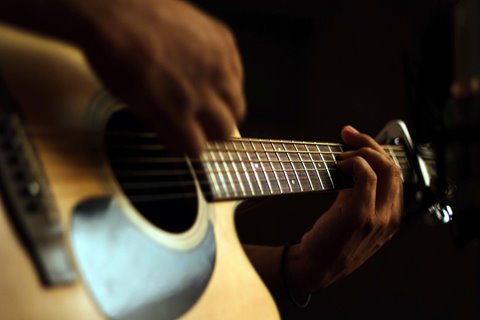The art of flamenco guitar playing
The art of flamenco guitar playing
Flamenco guitar players are known as “tocaores”. Flamenco guitar technique and position is known as “toque” and it's different to classic guitar. Flameno guitar players cross their legs and support the guitar on their higher leg, placing the guitar neck nearly parallel to the floor. This is the specific instrument for this style, but in recent times, more modern artists use also classic guitar. Flamenco guitar is less heavy than classic one and its body is narrower, offering a lower tune in order not to overshadow the singer. The traditional flamenco guitar is made of cypress, cedar wood for the neck and spruce wood for the top of the guitar. In the past, Palo santo from India or Rio was used in this kind of guitars. This latter had better quality. Currently, this material is not used because of the current shortage. Headstock is made of metal.
Flamenco guitar techniques
Guitar players use four techniques: picado, alzapúa, trémolo and rasgeo.
Picado: Single-line scale passages performed by playing alternately with the index and middle fingers, supporting the other fingers on the string immediately above. Alternate methods include using the thumb rapidly on adjacent strings, as well as using the thumb and index finger alternately, or combining all three methods in a single passage.
Rasgueado: Strumming done with outward flicks of the right hand fingers, done in a huge variety of ways. A nice rhythmic roll is obtained, supposedly reminiscent of the flamenco dancer feet and the roll of castanets. It can be performed with 5, 4, or 3 fingers.
Alzapúa: A thumb technique which has roots in oud plectrum technique. The right hand thumb is used both up and down for single-line notes and/or strumming across a number of strings. Both are combined in quick succession to give it a unique sound.
Tremolo: Rapid repetition of a single treble note, often following a bass note. Flamenco tremolo is different from classical guitar tremolo; it is usually played with the right hand pattern t-i-r-m-i (thumb-index-ring-middle-index), which gives a 4 note tremolo.
Both accompaniment and solo flamenco guitar are based as much on modal as tonal harmonies; most often, both are combined.
Flamenco guitar employs a vast array of percussive and rhythmic techniques that give the music its characteristic feel.
Toques are also classified according to the type of performance:
- Toque airoso: lively, rhythmic, with a brilliant, almost metallic sound.
- Toque gitano o flamenco: deep and very expressive, using offbeats and the bass string.
- Toque pastueño: slow and peaceful.
- Toque sobrio: without ornament or boasts.
- Toque corto: using only basic technique, without any expressive or technical resources.
- Toque frío: opposite of gypsy or flamenco, unexpressive.
